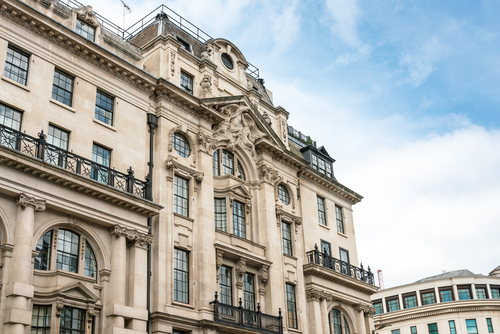From medieval castles to Elizabethan manor houses, Georgian townhouses and Victorian terraces, the UK’s historic buildings are central to our country’s identity and economy. And yet, the process of adapting these historic buildings so they can thrive in future and be more energy efficient is very challenging.
Importance of retrofitting
Currently, buildings account for nearly a fifth of the UK’s emissions. Defined as structures built before 1919, historic buildings account for almost a quarter of the UK’s homes (6.2 million) and a third of all commercial property (600,000 buildings).
Improving the energy efficiency of older properties through measures like double glazing and insulation could, not only make them warmer, more comfortable and more efficient to run, but would also reduce emissions from the UK’s buildings by an estimated five per cent each year – according to a report we commissioned.
The opportunity is significant, but the system we have today is frustrating, costly and prohibitive for many property owners. This creates very few incentives and a lot of barriers for owners of historic buildings who want to invest in energy efficiency improvements.
For this reason, it was encouraging to see the Government publish a review of the barriers to retrofitting historic buildings.
Reform of planning measures
At present, owners of listed buildings must obtain listed building consent for alterations, extensions, or demolition – that affect the significance/special interest of a listed building.
On top of this, they may also need planning permission if the works would materially affect the external appearance of a building. You can find out more about the permissions in Historic England’s advice note, which is currently out for consultation.
In many cases, this is quite right, but proportionality is important, so a welcome proposal in the review is to consult on changes to Listed Building Consent Orders (LLBCO).
A LLBCO allows a local authority to grant listed building consent for routine or minor changes to any identified listed buildings in their area, over an extended period of time. This consent is granted provided that the works either do not harm the significance of the building or are outweighed by the public benefits.
For example, the Royal Borough of Kensington and Chelsea have a LLBCO allowing the installation of secondary glazing to any window and double-glazed windows within existing frames in certain circumstances without the need to apply for consent.
Supporting more councils to grant blanket approvals– to some or all of the listed buildings in their area for specified alterations is a welcome step forward and should in theory simplify the application process.
Similarly, there is a proposal to give the Westminster government the power to create national LLBCOs in England, providing mass consent for alterations to different types of listed buildings.
Whilst simplifying Listed Building Consent is a step forward, planning permission may still be required, so advice from local authority is often an essential step.
Some local authorities like Westminster offer advice to householders wanting to carry out environmental performance improvements to their properties at a discounted rate and it would be welcome to see others follow this initiative.
Reviewing the EPC system
In another necessary development, the government review also commits to looking again at whether Energy Performance Certificates (EPCs) work for heritage buildings. As an owner and manager of hundreds of listed buildings, we agree the system should be based on a more nuanced understanding of different historical materials, construction methods and fundamentally, actual energy consumption.
Time for action
In practice, retrofitting historic buildings – particularly if they are listed or in conservation areas – is always a balance between cutting heat loss and preserving their character. Intelligent and sensitive retrofit requires a supportive policy framework that cuts across planning, skills, financial support, and consumer advice.
The new government review includes some encouraging proposals. By streamlining planning and introducing a uniform set of policies, the process of retrofitting heritage buildings could be made easier and cheaper encouraging more owners to improve their properties for the long term.
The historic environment is important to the UK culturally and economically, but it is also a surprisingly significant part of our built environment. Alongside increasingly progressive approaches by councils, policy is a key starting point. Unless that is clear, there is little basis for consistent decision-making and action by anyone involved.













.png)


.png)



Join the conversation
Be the first to comment (please use the comment box below)
Please login to comment